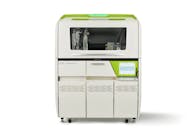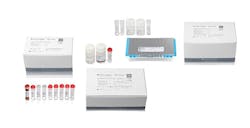FDA updates SARS-CoV-2 EUA test lists to indicate number of viral targets
The U.S. Food and Drug Administration (FDA) has updated its lists of molecular and antigen SARS-CoV-2 tests with emergency use authorizations (EUA) to indicate whether each approved test is designed with single or multiple viral targets.
The FDA said it provided the new information on each assay because “tests with single targets are more susceptible to changes in performance due to viral mutations, meaning they are more likely to fail to detect new variants. Tests with multiple targets are more likely to continue to perform well when new variants emerge.”
The issue came up after the arrival of the Omicron variant of SARS-CoV-2 in late 2021. At that time, public health and government officials began to analyze the impact of Omicron on test results.
The concern centers around the number of mutations in Omicron, compared with earlier variants and the original virus. Many of these occur in the spike protein, which the Centers for Disease Control and Prevention (CDC) said, “is characterized by at least 30 amino acid substitutions, three small deletions, and one small insertion. Notably, 15 of the 30 amino acid substitutions are in the receptor binding domain (RBD). There are also a number of changes and deletions in other genomic regions.”
The issue is whether a diagnostic test will produce accurate results if a mutation occurs in the virus in the gene target that the test is designed to detect. If a test detects multiple gene targets, it will still detect the presence of SARS-CoV-2 via the other targets and produce accurate test results, the FDA has said.
However, if the test is a single-target or multiple-target assay in which all of its targets are impacted by mutations, it will fail to detect Omicron, leading to false negative test results, according to the FDA.





